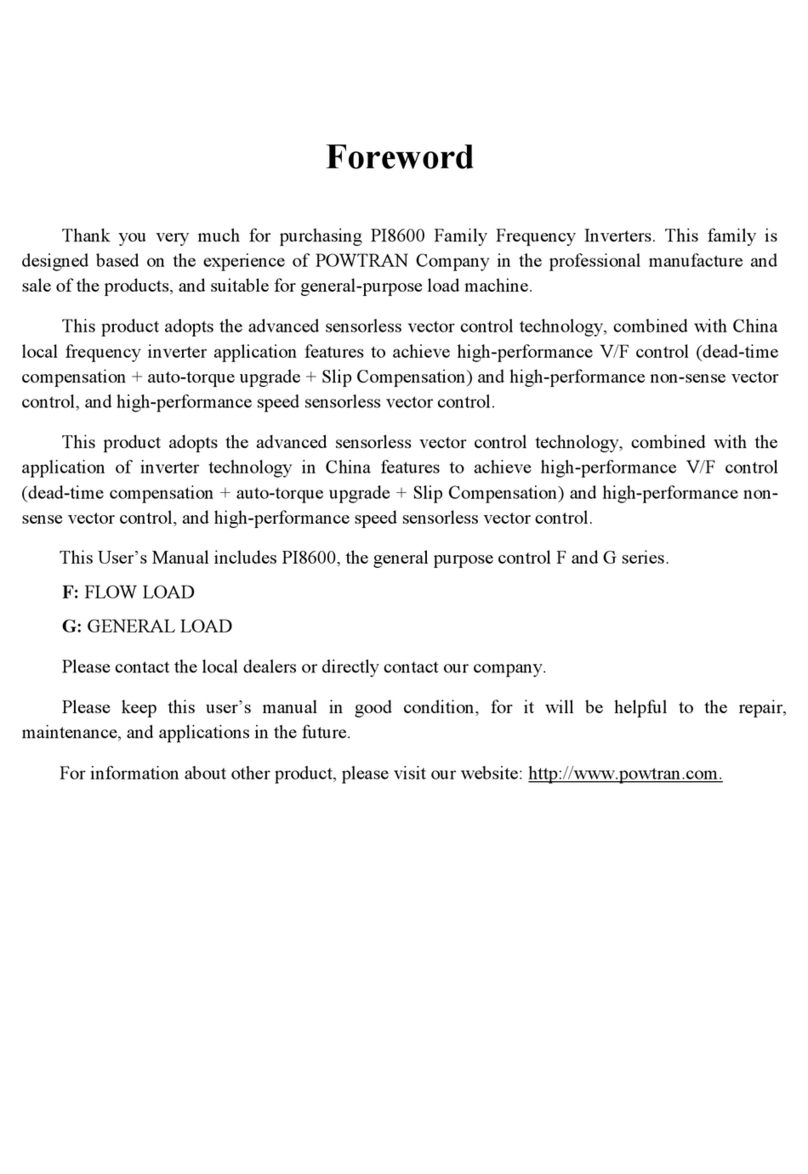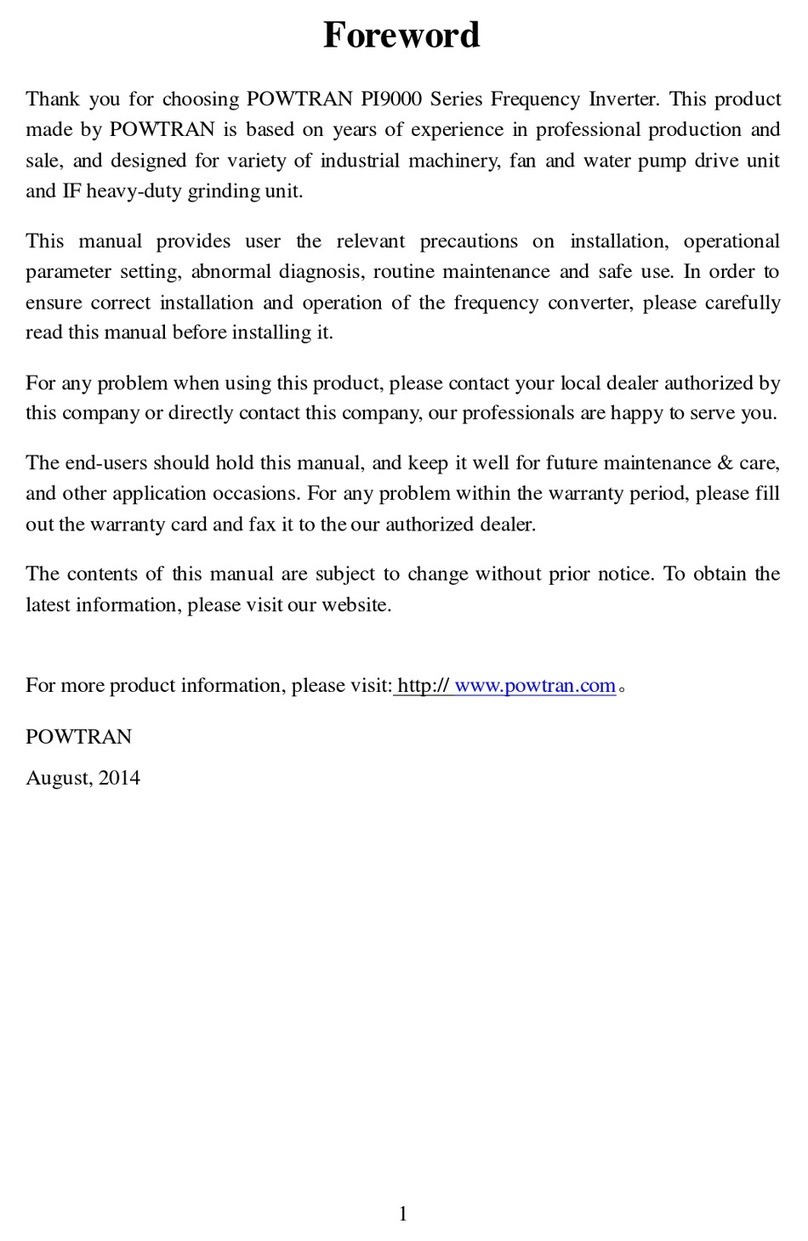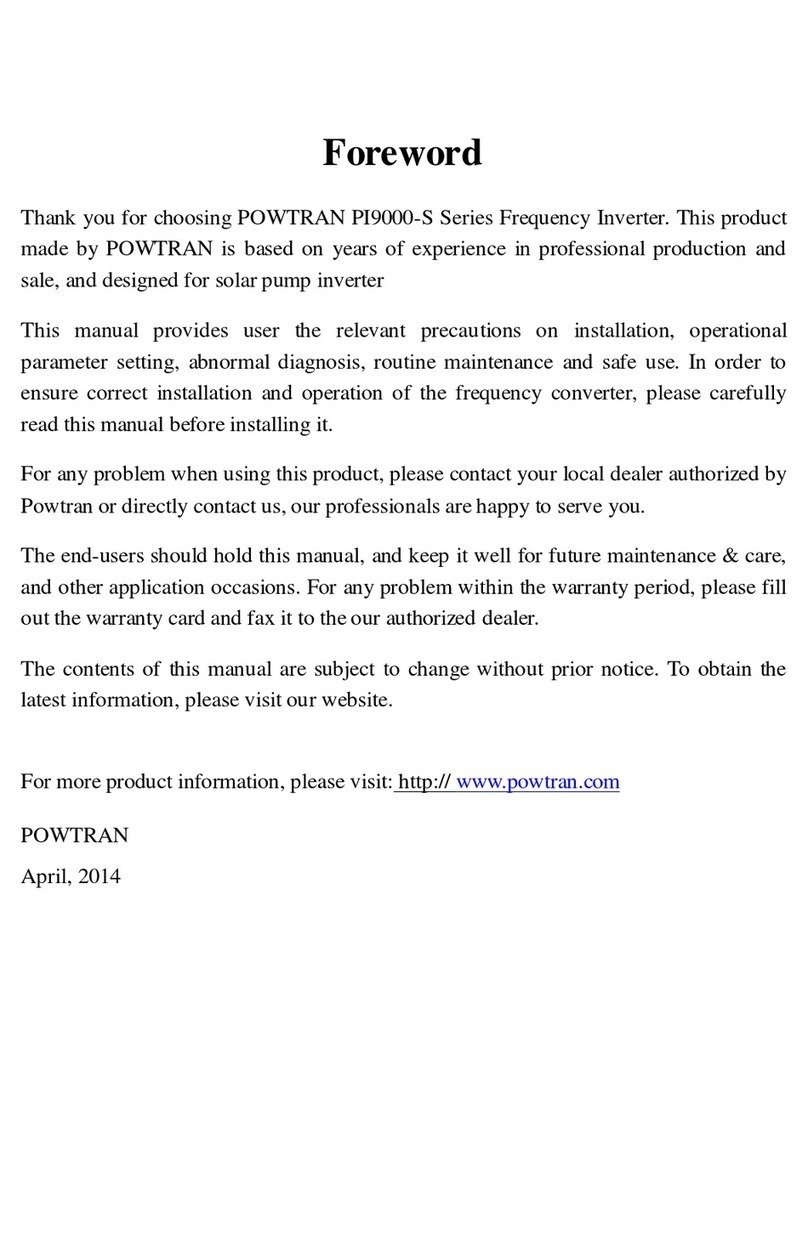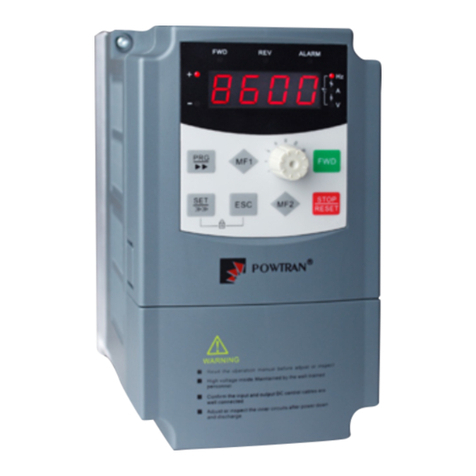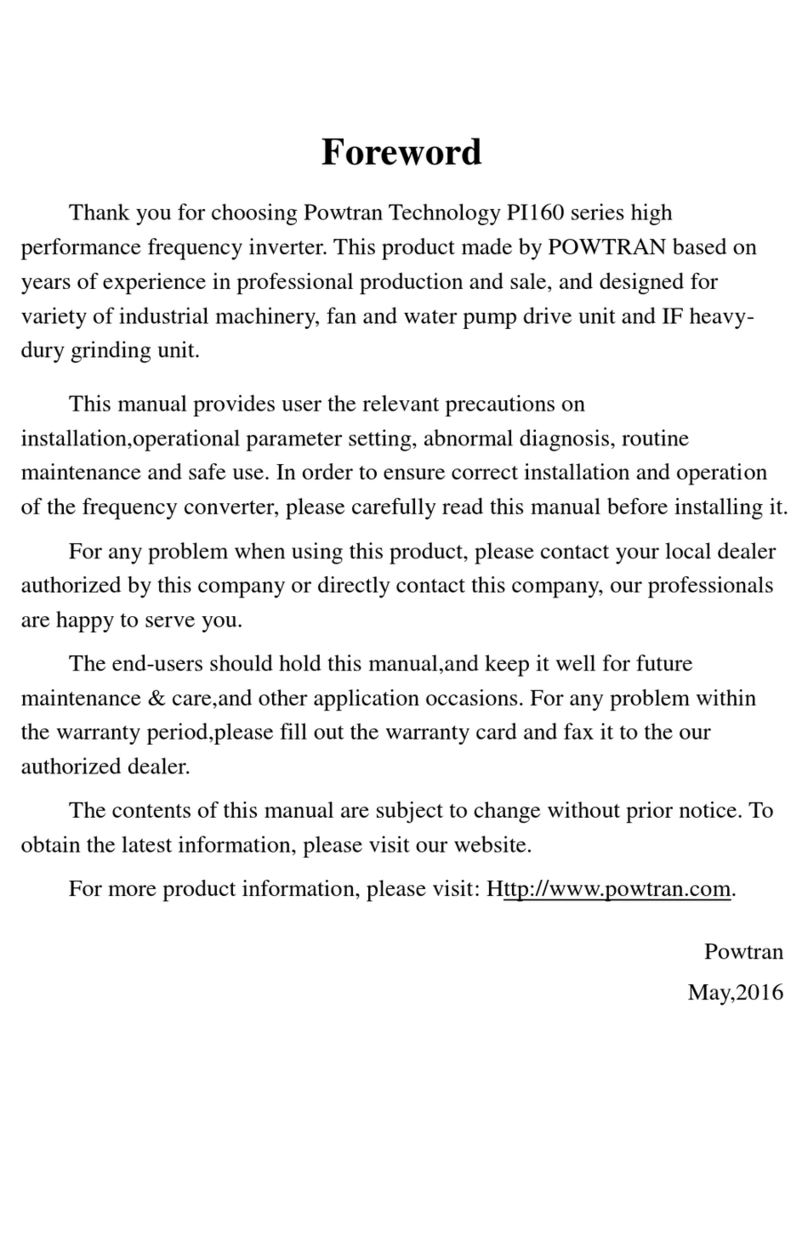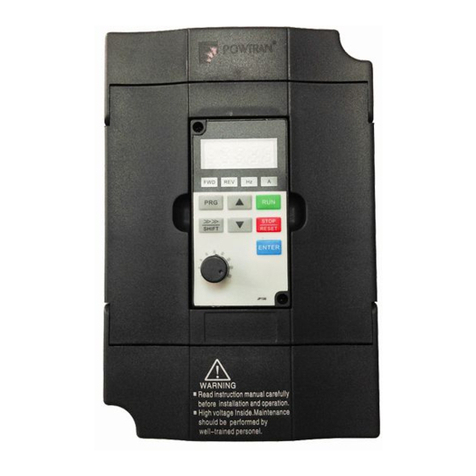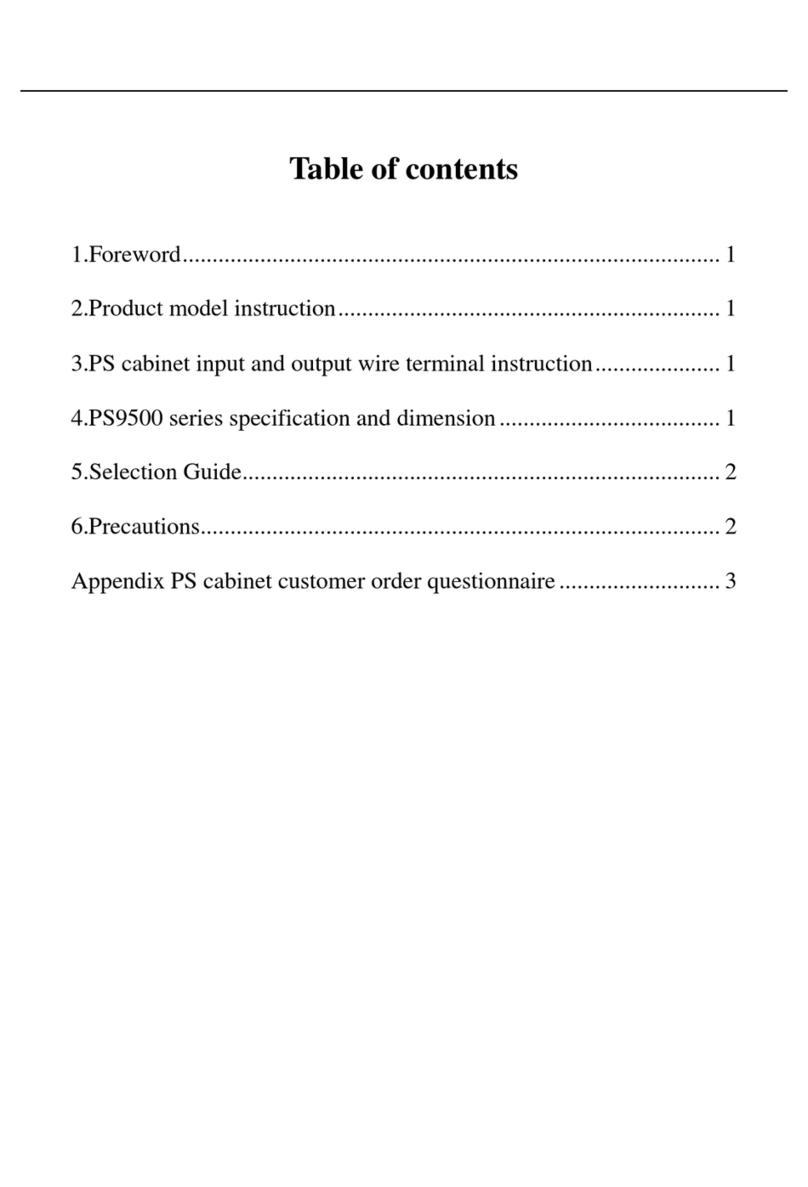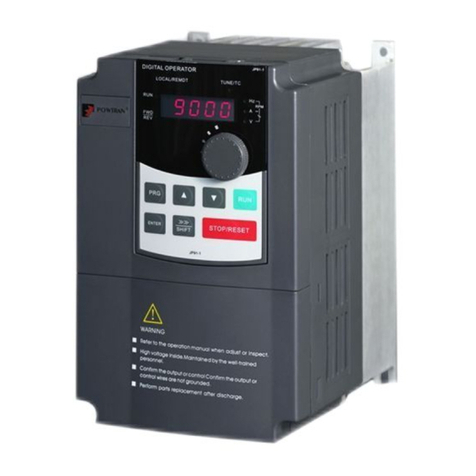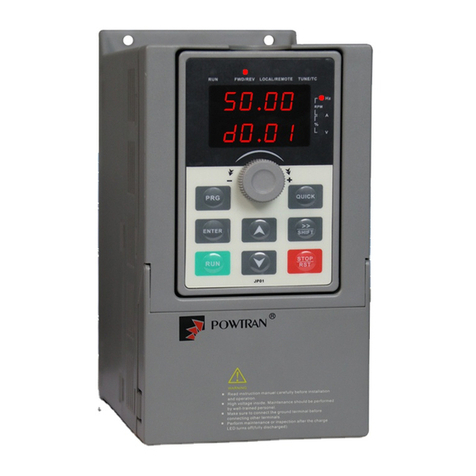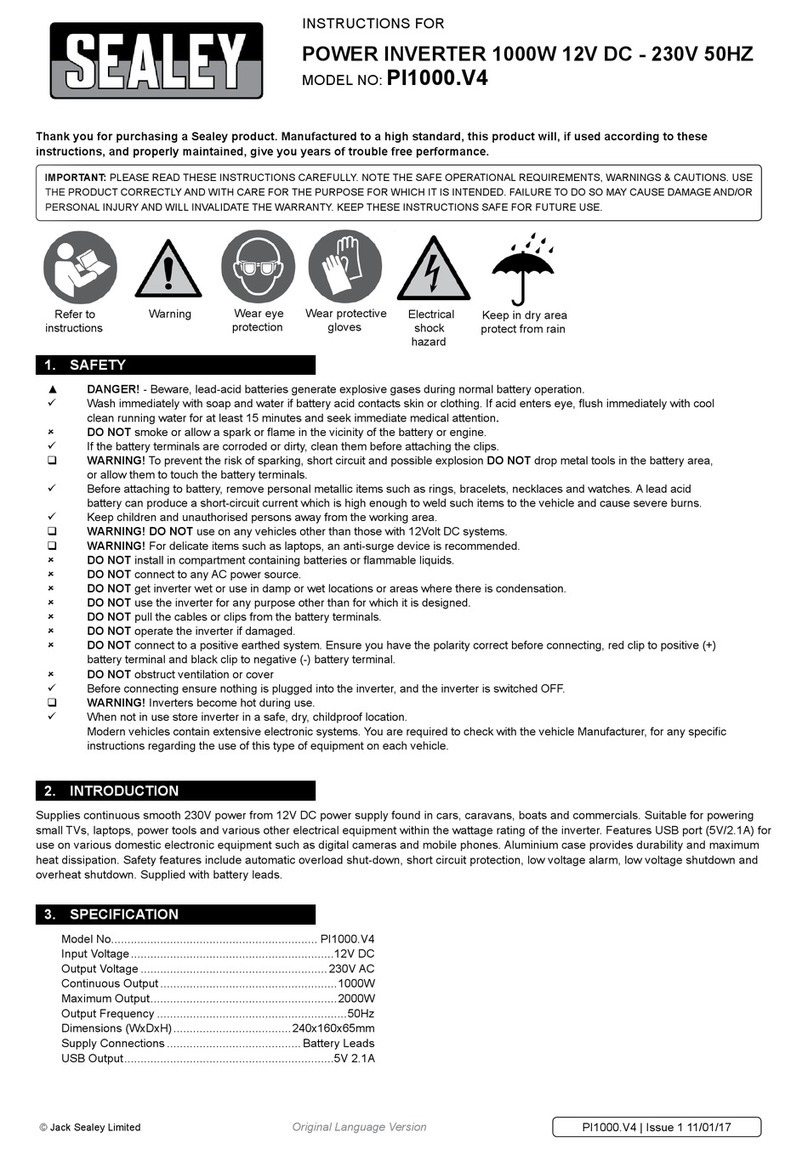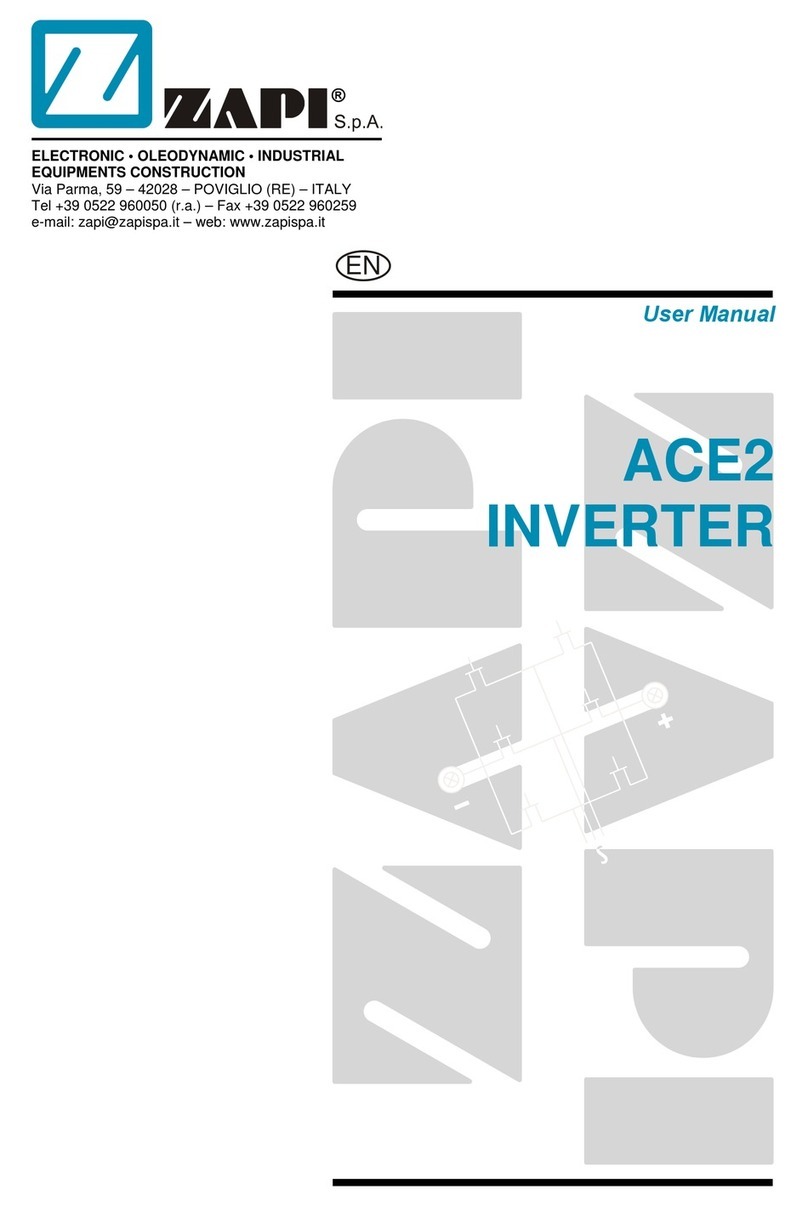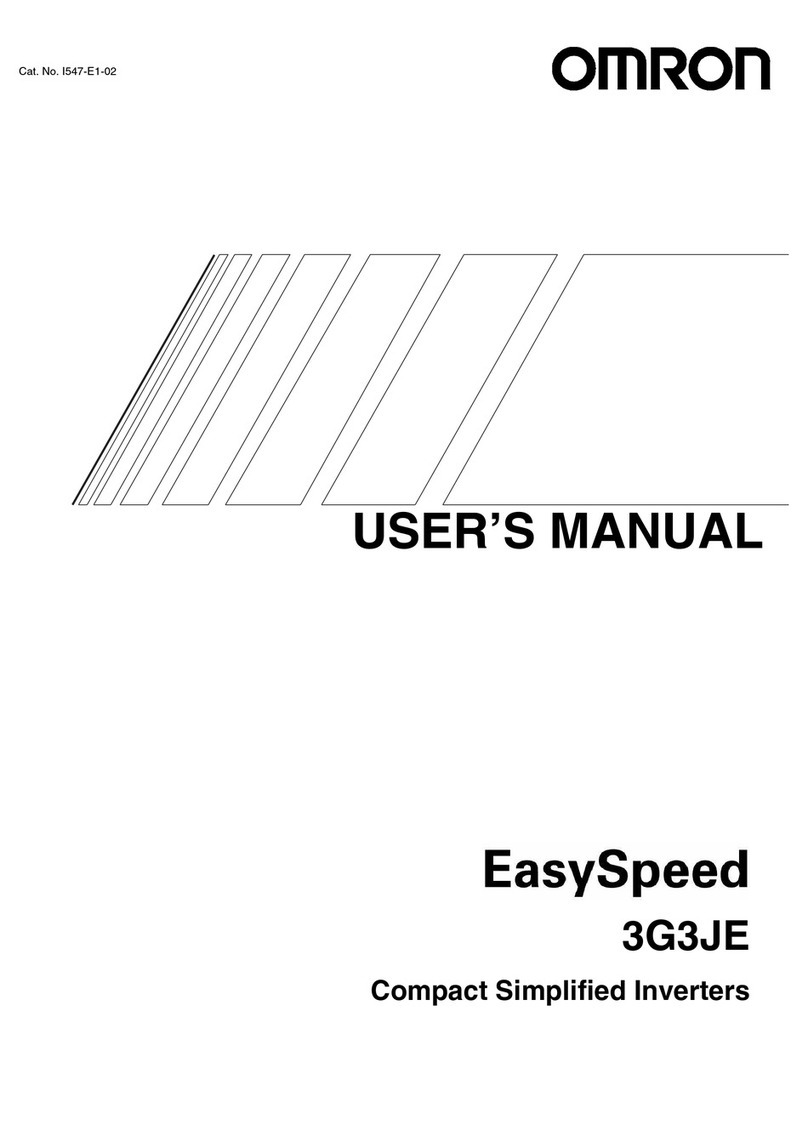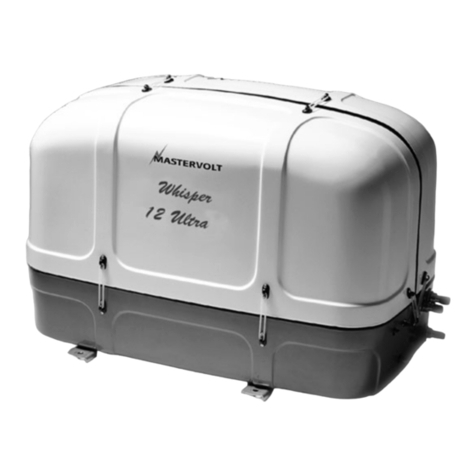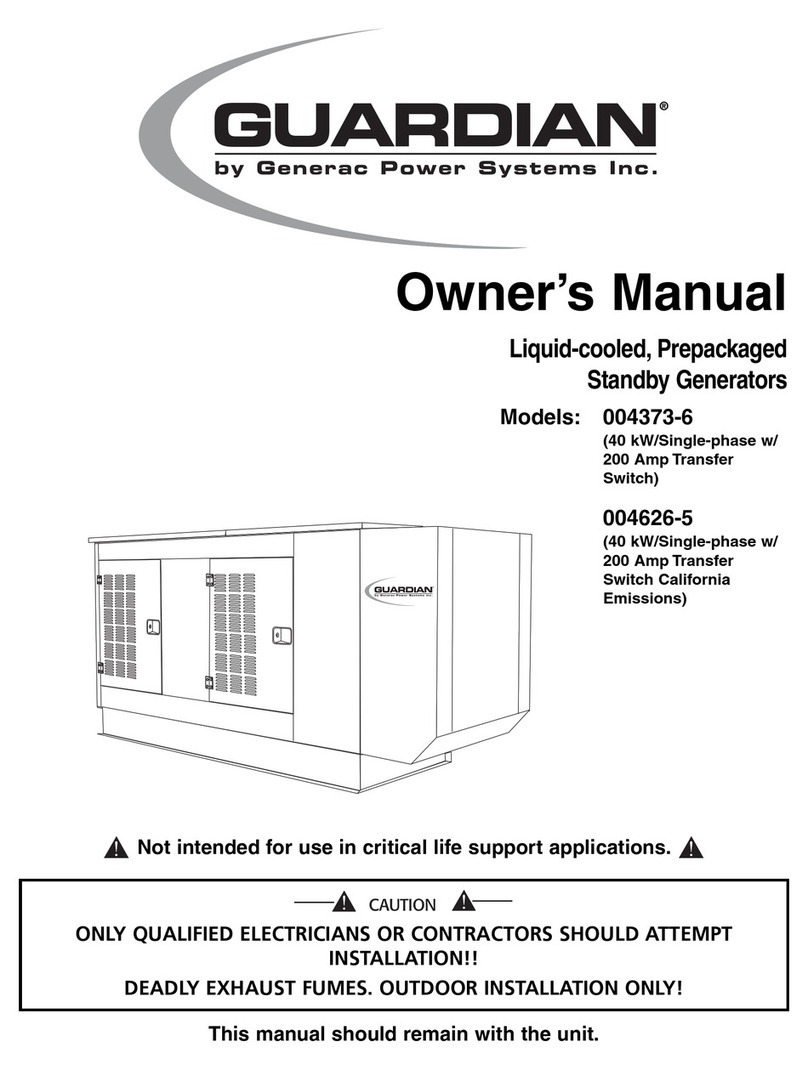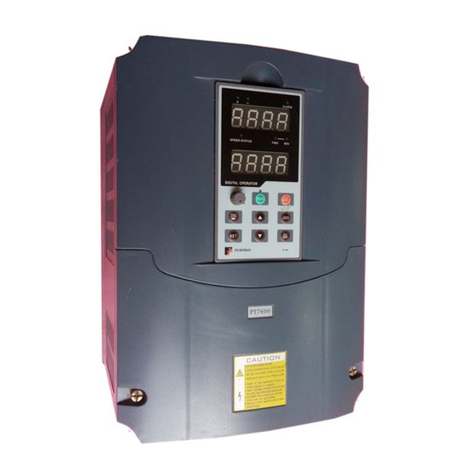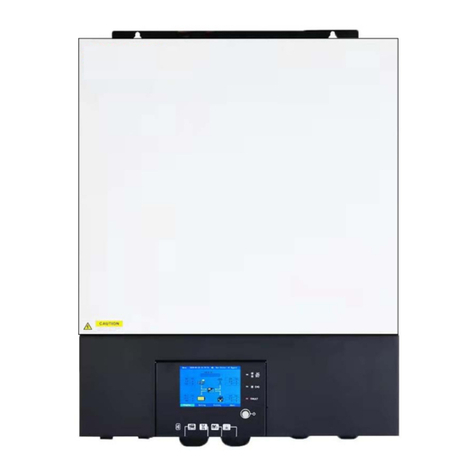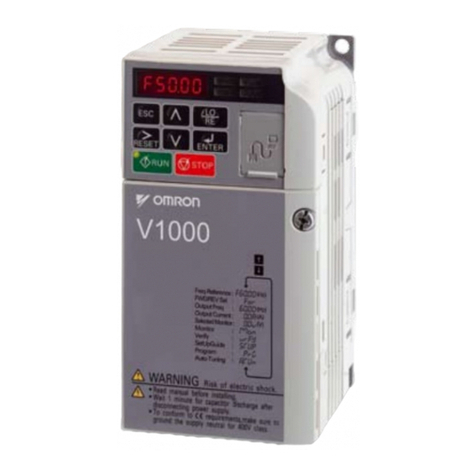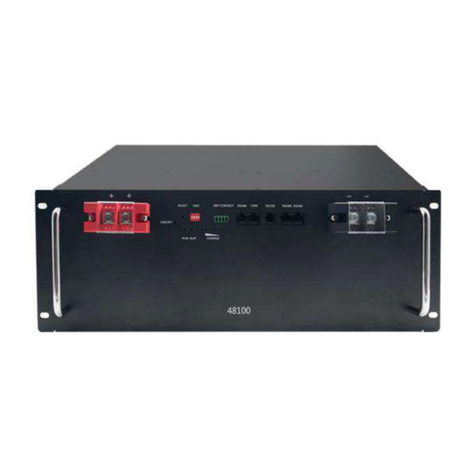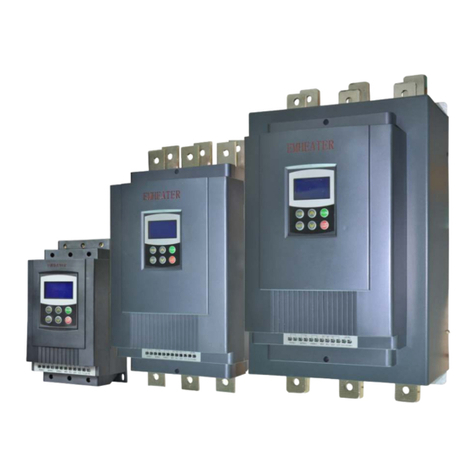
18 /20
is not suitable
3.The voltage is low
4.The short-circuit or earthing of
inverter output happens
5.The control mode is vector and
without identification of parameters
6.The motor that is rotating is
started unexpectedly.
7.Suddenly increase the load in the
process of acceleration.
8.The type selection of inverter is
small
or V/F curve
3.Set the voltage to the
normal range
4.Eliminate peripheral faults
5.Perform identification for
the motor parameters
6.Select Speed Tracking Start
or restart after stopping the
motor.
7.Cancel the sudden load
8.Choose the inverter with
large power level
1.The short-circuit or earthing of
inverter output happens
2.The control mode is vector and
without identification of parameters
3.The deceleration time is too short
4.The voltage is low
5.Suddenly increase the load in the
process of deceleration.
6.Didn't install braking unit and
braking resistor
1.Eliminate peripheral faults
2.Perform identification for
the motor parameters
3.Increase the deceleration
time
4.Set the voltage to the
normal range
5.Cancel the sudden load
6.Install braking unit and
brake resistor
Constant speed
overcurrent
1.The short-circuit or earthing of
inverter output happens
2.The control mode is vector and
without identification of parameters
3.The voltage is low
4, whether suddenly increase the
load when running
5.The type selection of inverter is
small
1.Eliminate peripheral faults
2.Perform identification for
the motor parameters
3.Set the voltage to the
normal range
4.Cancel the sudden load
5.Choose the inverter with
large power level
1.Didn't install braking unit and
braking resistor
2.The input voltage is high
3.There is external force to drag the
motor to run when accelerating.
4.The acceleration time is too short
1.Install braking unit and
brake resistor
2.Set the voltage to the
normal range
3.Cancel the external force or
install braking resistor.
4.Increase acceleration time
1.The input voltage is high
2.There is external force to drag the
motor to run when decelerating.
3.The deceleration time is too short
4.Didn't install braking unit and
braking resistor
1.Set the voltage to the
normal range
2.Cancel the external force or
install braking resistor.
3.Increase the deceleration
time
4.Install braking unit and
brake resistor
Constant speed
overvoltage
1.There is external force to drag the
motor to run when running
2.The input voltage is high
1.Cancel the external force or
install braking resistor.
2.Set the voltage to the
normal range
1.The range of input voltage is not
within the specification
2.frequent under-voltage fault
Adjust the voltage to the
range of the requirements of
specification
1.The momentary power cut
2.The inverter's input voltage is not
within the specification
3.The bus voltage is not normal
4.The rectifier bridge and buffer
resistance are abnormal
5.The drive panel is abnormal.
6.The control panel is abnormal
1.Reset fault
2.Adjust the voltage to the
normal range
3.Seek for technical support
1.The type selection of inverter is
small
2.Whether the load is too large or
the motor stall occurs
1.Choose the inverter with
large power level
2.Reduce the load and check
the motor and its mechanical
conditions
1. power grid voltage is too low
2.Whether the setting motor
protection parameters (F8.03) is
appropriate or not
3.Whether the load is too large or
the motor stall occurs
1.Check the power grid
voltage
2.Correctly set this
parameter.
3.Reduce the load and check
the motor and its mechanical
conditions
1.The lead wires from the inverter
to the motor is not normal
2.The inverter's three phase output
is unbalanced when the motor is
running
3.The drive panel is abnormal.
4.The module is abnormal
1.Eliminate peripheral faults
2.Check the motor's
three-phase winding is
normal or not and eliminate
faults
3.Seek for technical support
1.The air duct is blocked
2.The fan is damaged
3.The ambient temperature is too
high
4.The module thermistor is
damaged
5.The inverter module is damaged
1.Clean up the air duct
2.Replace the fan
3.Decrease the ambient
temperature
4.Replace the thermistor
5.Replace the inverter
module
Input external fault signal through
the multi-function terminal DI
1.The communication cable is not
normal
2.The settings for communication
expansion card F9.07 are incorrect
3.The settings for communication
parameters F9 group are incorrect
4.The host computer is not working
properly
1.Check the communication
cable
2.Correctly set the
communications expansion
card type
3.Correctly set the
communication parameters
4.Check the wiring of host
computer
1.Input phase loss
2.The drive plate and the contact
are not normal
1.Check and eliminate the
existing problems in the
peripheral line
2.Replace the drive, the
power board or contactor
1.Check hall device
2.The drive panel is abnormal.
1.Replace the drive panel
2.Replace hall device




















